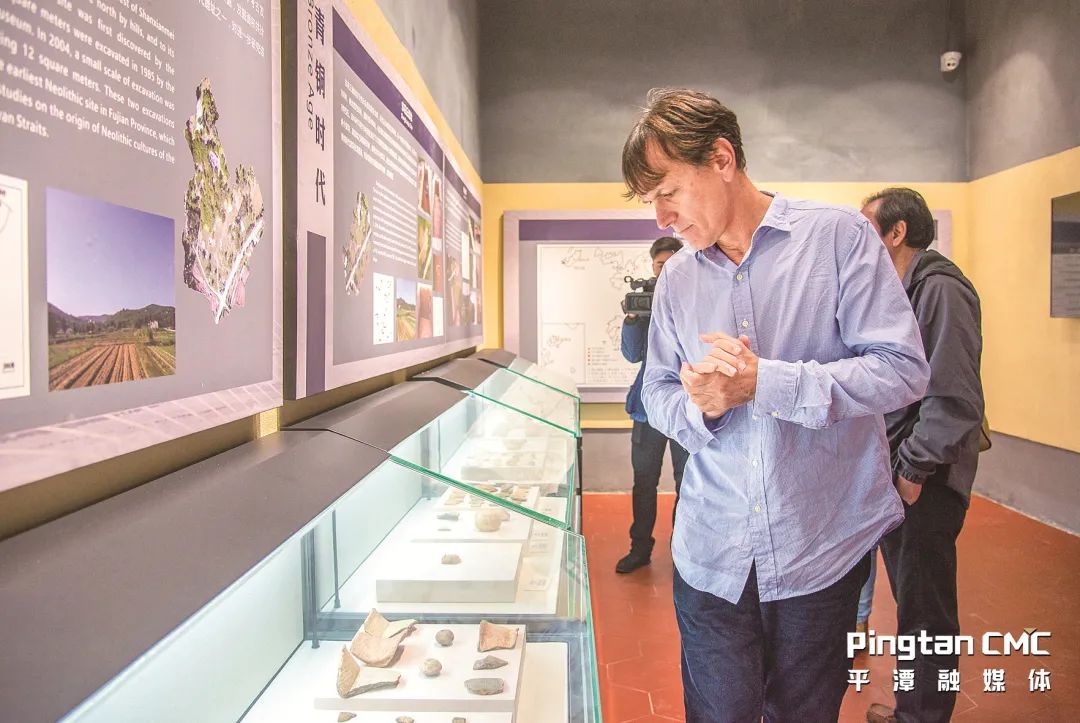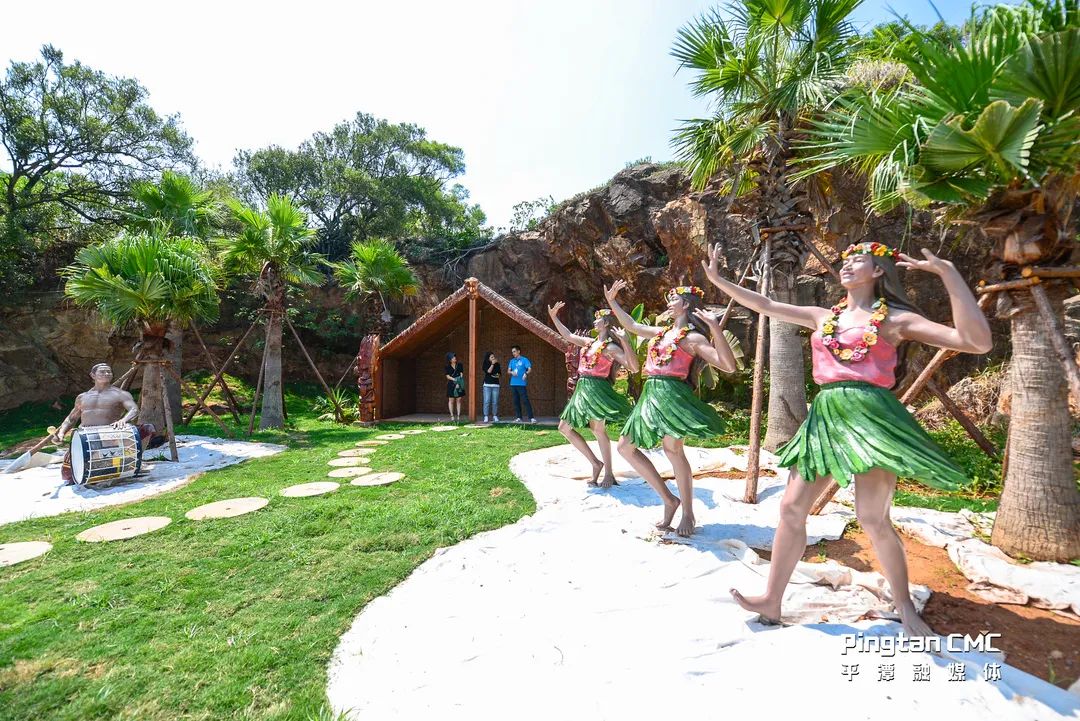From Pingtan to the world: Tracing the ancestry of 270 million people worldwide
en.ptnet.cn | Updated:2023-04-10 | Lin Kongbo, StephanieIn recent years, Austronesian research has been a puzzle of increasing interest to academicians. The Austronesian refers not to a single ethnic group of a country but rather a population speaking the Austronesian language. In the Pacific and Indian Oceans, countless islands populated by different ethnicities scatter, taking up about one-third of the combined water expanse of these two great oceans. People on the islands shared remarkable physical traits and languages. Some of them are mutually intelligible with similar pronunciations and meanings. Notably, this family group has similar navigation methods and abilities. The uncanny similarity even goes as far as the structure of the vessels they built. Linguists refer to this special group with common oceanic culture and bond as the Austronesian.

In November 2010, after nearly four months of sailing, Austronesians from the Pacific arrived in Pingtan to embark on a journey of discovery - solving the mystery of the Austronesian ancestry.
According to the World Language Database, the Austronesian comprises 1,262 languages spoken by a population of approximately 270 million worldwide. The geography spans from Easter Island in the eastern Pacific Ocean to Madagascar in the Indian Ocean, from Hawaii and the southeast coast of China in the north to New Zealand in the south. The majority of Austronesian language speakers reside in Taiwan, the Philippines, Malaysia, Indonesia, and Polynesia. Linguistic research shows that the Austronesian is the world's most widely distributed language family and the only language family distributed on islands.

American archaeologist and anthropologist Barry Rolett visits Pingtan International Research Center for Austronesian Archaeology.
Where did the Austronesians come from? This is an ancient mystery. It was an accepted view that the origin of the Austronesians is in Taiwan among many scholars. In 1964, archaeologist Zhang Guangzhi from Yale University led excavations at the Dapenkeng Neolithic Shell Mound in Taiwan, where a large number of cord-marked pottery, polished stone axes, stone adzes, pendants, and tapa beaters were unearthed. The site was identified as the ancestral ground of the Austronesian, related to the existing ethnic minorities in Taiwan. In 2012, archaeologist Chen Zhongyu from Taiwan excavated human remains on Liang Island affiliated to Matsu Islands. The remains were sent for genetic analysis at the Max Planck Institute for Human Development in Germany, which later confirmed that the Liang Island people from 7,900 years ago were the ancestors of the Austronesian.

Pingtan Keqiutou Archaeological Site Park
The discovery of the Keqiutou (Shell Mound) Site on Pingtan Island pushed back the existence and maritime migration of the Austronesians by 500 years. In May 2020, Fu Qiaomei's team from the Institute of Vertebrate Paleontology and Paleoanthropology of the Chinese Academy of Sciences published a research paper in the journal Science, which had two major conclusions. The first was that it was the first time to prove that ancient populations in both southern and northern China had already diverged as early as 9,500 years ago with significant differences. The second was that it was the first time to prove that "the earliest Austronesian population originated from southern China's Fujian and its adjacent regions, and the time was traced back to 8,400 years ago.

Timeline of Austronesian migration
So what makes Pingtan a base for international Austronesian research? Is Pingtan really the first stepping stone for the Austronesians to move from the mainland to the islands? Pingtan CMC's visit to the Keqiutou Site offers you a glimpse of a long-forgotten world interwoven with the coordinates of time and space.

Pingtan International Research Center for Austronesian Archaeology
The Keqiutou Site is the earliest Neolithic site along the coast of Fujian province. There are large-scale settlements from the Neolithic to the Bronze Age around the site. The "Pingtan Prehistoric Site Group" represented by Keqiutou was announced as the eighth batch of national cultural relics protection units and the first batch of provincial archaeological site parks in Fujian.
The Keqiutou Site was discovered during the cultural relics survey in Fujian in 1958. It was first excavated by the archaeological team of the Fujian Provincial Museum in 1985 and named "Keqiutou Culture" based on the cultural connotation and characteristics of the ruins. Its age is estimated to be between 6500 and 5500 years ago.
In 2004, the Fujian Museum and the Anthropology Department of the University of Hawaii collaborated on a research project on prehistoric navigation in Southeast Asia and the Austronesian family. They conducted a second excavation of the Keqiutou Site and compared its cultural content with that of the Dapenkeng Site. By combining with age-dating data, they concluded that the Keqiutou Site is earlier than most of the Dapenkeng Sites, and speculated that the Keqiutou culture may be the source or one of the sources of the Dapenkeng culture. From this, they also inferred the striking similarity between the two suggests cultural inheritance.
In June 2022, the Chinese Academy of Social Sciences Institute of Archaeology, the Fujian Provincial Institute of Archaeology, and the Pingtan International Research Institute of Austronesian formed a joint excavation team to carry out the third archaeological excavation of the Guishan Site in the Keqiutou Sites in Pingtan. Professor Zhu Songling of Beijing Union University pointed out that the archaeological discoveries in the Pingtan Keqiutou Sites have demonstrated that the two sides have belonged to the same country since ancient times, and the ethnic groups on both sides have belonged to the same group since ancient times. In recent years, the cultural relics excavated on both sides of the Taiwan Straits have shown the historical origins of the common roots, blood ties, and brotherhood between the two sides of the Straits, which helps deepen research on the origin of Chinese civilization.
The Keqiutou Site has been identified by mainland archaeologists as an important representative of the Austronesian family. In November 2017, the "Pingtan International Research Center for Austronesian Archaeology " was established jointly by the Institute of Archaeology of the Chinese Academy of Social Sciences, the Fujian Provincial Museum, and Pingtan to explore major research topics such as prehistoric human behavior patterns, the relationship between human activities and environmental changes, regional cultural exchanges across the Taiwan Straits, and the relationship between Fujian and Taiwan cultures. This is the first international research center for Austronesian archaeology on the mainland.
To strengthen the protection, utilization, and development of the sites, and create a cultural brand for Pingtan International Tourism Island, Pingtan uses the Keqiutou Site as the core and combines the ecological environment to build the world's first Austronesian-themed archaeological site park. Positioned as a cultural experience center where Keqiutou history and the Austronesian ancestry intersect, the park takes the form of an open-air museum comprising six areas: public service and archaeological experience area, main exhibition area, Austronesian international cultural exchange area, Austronesian folk culture village area, local cultural exhibition area, and park reserve.
In the Haitan Strait of Pingtan, there are many coves and ports, which serve as shelters for small and medium-sized ships to sail along the coast. Due to the high waves, numerous reefs, and complex sea conditions in this area, countless ships have been stranded and sunk for thousands of years, including 10 sunken shipwrecks such as "Wan Jiao No.1," "Wan Jiao No.2," and "Dalian Island No.1." These wrecks outline a thousand-year-old ceramic export route, which is evidence of the Maritime Silk Road.

Rendering of ongoing Haitan Strait Underwater Archaeological Site Park
At the museum of the Pingtan International Research Center of Austronesian Archaeology, the "Prehistoric Ruins" exhibition hall displays a host of cultural relics excavated from the Keqiutou Site. Through these simple but exquisite exhibits, the living scenes of ancient humans and ancient pottery shards are like vivid pictures from the distant past, showing what was like in the past. In the "Maritime Silk Road Treasures" exhibition hall, the blue and white porcelain salvaged from the waters of Pingtan is breathtaking. These elegant and finely crafted Jingdezhen porcelain masterpieces have slept on the seabed for hundreds of years. Gazing at their stunning figures, one can feel the long history and exotic customs that come rushing in like a gust of wind.
Spotted a mistake or want to add something? All rights reserved. Do not reproduce our content without permission–you can contact us directly on our Twitter mailbox. Follow @pingtanchina (Twitter)

